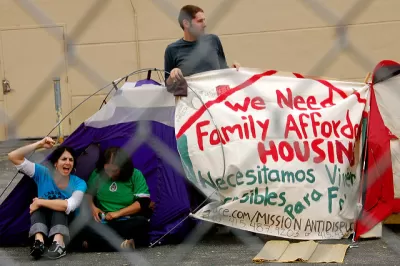With HUD seeking comments on a revamped version of the Affirmatively Furthering fair Housing Rule, now is a good time to seek lessons from the one state to attempt to implement the federal rule at the state level.

The Biden administration revamped the Affirmatively Furthering Fair Housing (AFFH) rule back in January of this year, with the hope of improving upon the model first adopted by the Obama administration in 2015 and eventually scrapped by the Trump administration in 2020. The rule is intended to strengthen the anti-discrimination efforts of the 1968 Fair Housing Act (FHA).
With that goal in mind, Natalie Spievack and Ben Metcalf write an article for the Terner Center for Housing Innovation at the University of California, Berkeley that digs into the efforts of California to accomplish many of the same outcomes.
“Despite the break in federal action on AFFH, California has been working to pursue AFFH goals since the 2015 rule was put into place, with a particular focus on creating racially and economically integrated communities,” according to the article. The state’s AFFH efforts have produced clear lessons about what it takes to incentivize affordable housing in “high-opportunity neighborhoods,” how to rezone for fair housing in the housing element processes required by state law, and codifying AFFH at the state level.
More analysis on California’s implementation of AFFH was published and shared by Planetizen in June 2022.
The source article, linked below, also notes that the U.S. Department of Housing and Urban Development is seeking comments about the newly revised AFFH rule until April 10.
FULL STORY: Reaffirming the Federal Commitment to Fair Housing: Lessons from California in Implementing AFFH

Alabama: Trump Terminates Settlements for Black Communities Harmed By Raw Sewage
Trump deemed the landmark civil rights agreement “illegal DEI and environmental justice policy.”

Planetizen Federal Action Tracker
A weekly monitor of how Trump’s orders and actions are impacting planners and planning in America.

The 120 Year Old Tiny Home Villages That Sheltered San Francisco’s Earthquake Refugees
More than a century ago, San Francisco mobilized to house thousands of residents displaced by the 1906 earthquake. Could their strategy offer a model for the present?

In Both Crashes and Crime, Public Transportation is Far Safer than Driving
Contrary to popular assumptions, public transportation has far lower crash and crime rates than automobile travel. For safer communities, improve and encourage transit travel.

Report: Zoning Reforms Should Complement Nashville’s Ambitious Transit Plan
Without reform, restrictive zoning codes will limit the impact of the city’s planned transit expansion and could exclude some of the residents who depend on transit the most.

Judge Orders Release of Frozen IRA, IIJA Funding
The decision is a victory for environmental groups who charged that freezing funds for critical infrastructure and disaster response programs caused “real and irreparable harm” to communities.
Urban Design for Planners 1: Software Tools
This six-course series explores essential urban design concepts using open source software and equips planners with the tools they need to participate fully in the urban design process.
Planning for Universal Design
Learn the tools for implementing Universal Design in planning regulations.
Jessamine County Fiscal Court
Caltrans
Institute for Housing and Urban Development Studies (IHS)
City of Grandview
Harvard GSD Executive Education
Toledo-Lucas County Plan Commissions
Salt Lake City
NYU Wagner Graduate School of Public Service




























